It’s been interesting to see and hear migrating birds come and go. I’ve been walking nearly every day since April at the Cedar Bluffs Natural Area in southwestern Mahaska County. On October 9 I heard my first Golden-crowned Kinglet of the year and I have been hearing them regularly since then.
Photo credit: Rhododendrites, CC BY-SA 4.0 <https://creativecommons.org/licenses/by-sa/4.0>, via Wikimedia Commons
The Golden-crowned kinglet (Regulus satrapa) is a very small songbird in the family Regulidae that lives throughout much of North America.
The species name for the golden-crowned kinglet is satrapa, which is the Latin word for a Persian viceroy or governor.
Coloring
Golden-crowned kinglets are pale green and gray with black and white faces, a bright yellow and orange crown, white wingbars, and black flight feathers with yellow edges.
Migration
Golden-crowned kinglets in the Appalachians and mountainous West tend to stay in one place year-round, while birds that breed across Canada move south to spend winters across the U.S..
Breeding
Golden-crowned kinglets form monogamous pair bonds and raise two broods every season, sometimes overlapping each other.
Parental care
The golden-crowned male contributes to parental care by feeding all of the young in the large brood and occasionally feeding the incubating mother.
There are three spiritual meanings associated with the Golden Crowned Kinglet: good fortune, royalty, prosperity, and its ability to navigate through the densest of forests symbolizes the importance of remaining flexible and open to change throughout life’s journey.
As near as I can figure, the geology of the Cedar Bluffs Natural Area is of the Lower Cherokee Group and the Racoon Creek Group formations. The dominant rock is sandstone.
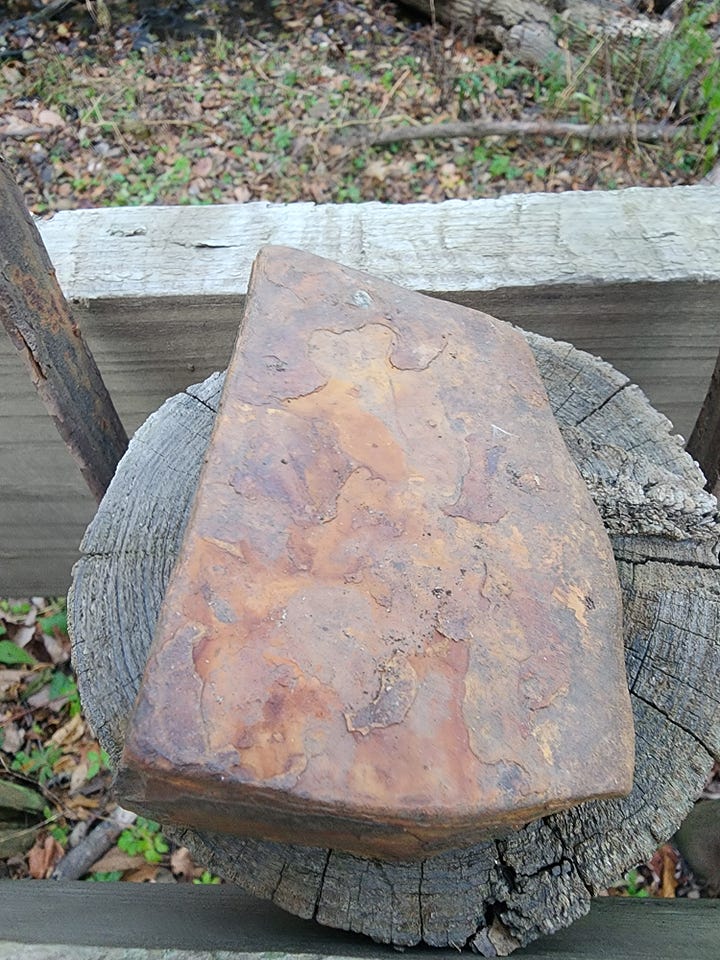
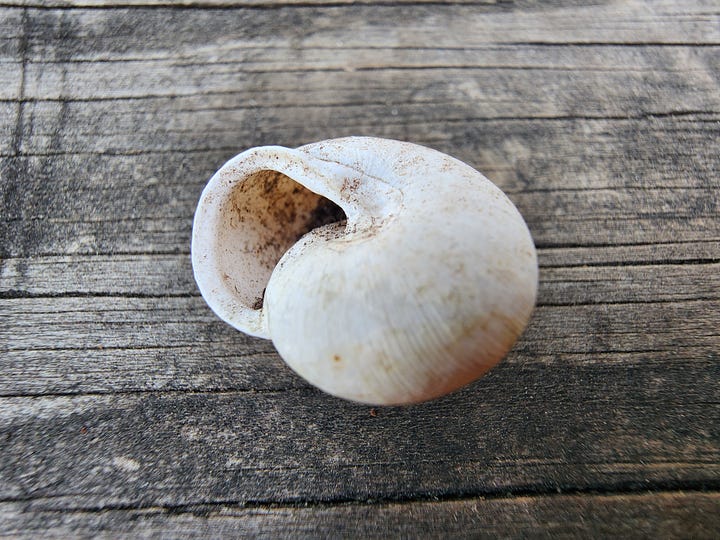
People like to curate items. Merriam-Webster says curation is the act or process of selecting and organizing (something, such as articles or images) for distribution or publication. My opinion is that people also curate items they want to share with others in real life near where they were encountered, as in situ as possible.
On the left is a heavy rock that looks oxidized. I’m not sure what to call it. Just that it is reddish, heavy, and of sedimentary origin, it appears. Regardless, someone placed it on a support post of a bridge that was destroyed a couple of years ago by a fallen tree in a storm. It has been in that position for at least two weeks, and no one has removed it. It’s in exactly the place where I prefer to rest my phone to record bird songs on my Merlin app. Yet, for some reason I feel it would be disrespectful of me to move it for my phone, when someone else had so nicely curated it. So there it sits. Right now I’m thinking that you, dear reader, must think I’m overthinking things. But that’s what I do.
On the right is the shell of a land snail of a species I occasionally encounter. Someone placed it on a bench on the overlook for display. I wonder how long it will remain in that place…
These sunglasses were placed on a post near the parking lot. This spot is where people tend to place lost and found items. They remained there for three days before someone took them, hopefully the original owner.
I love the geometric forms created as this log decomposes.
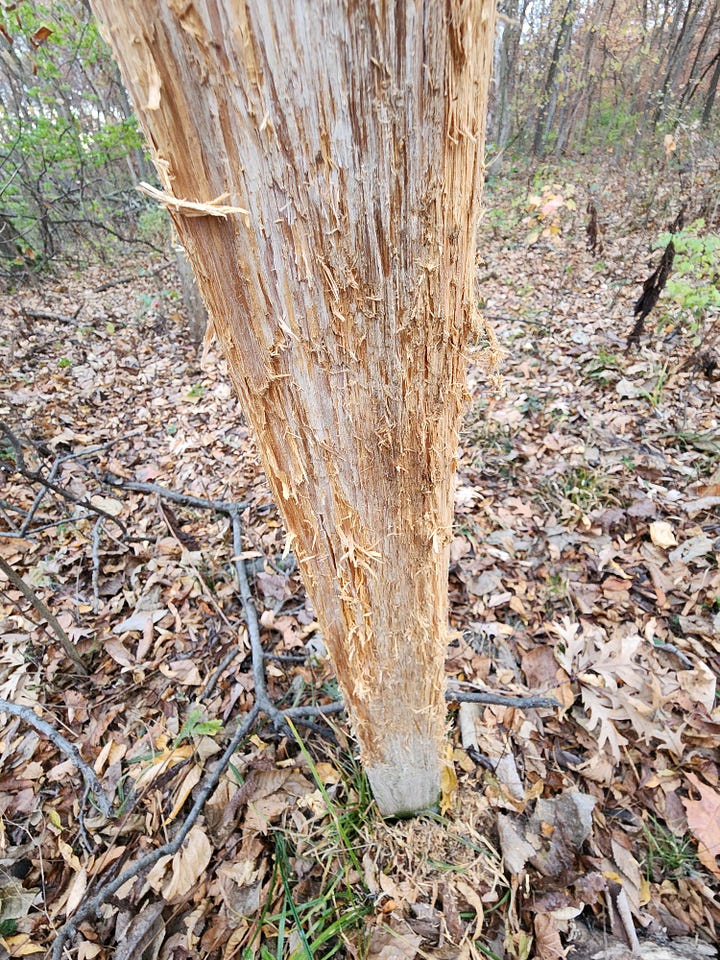
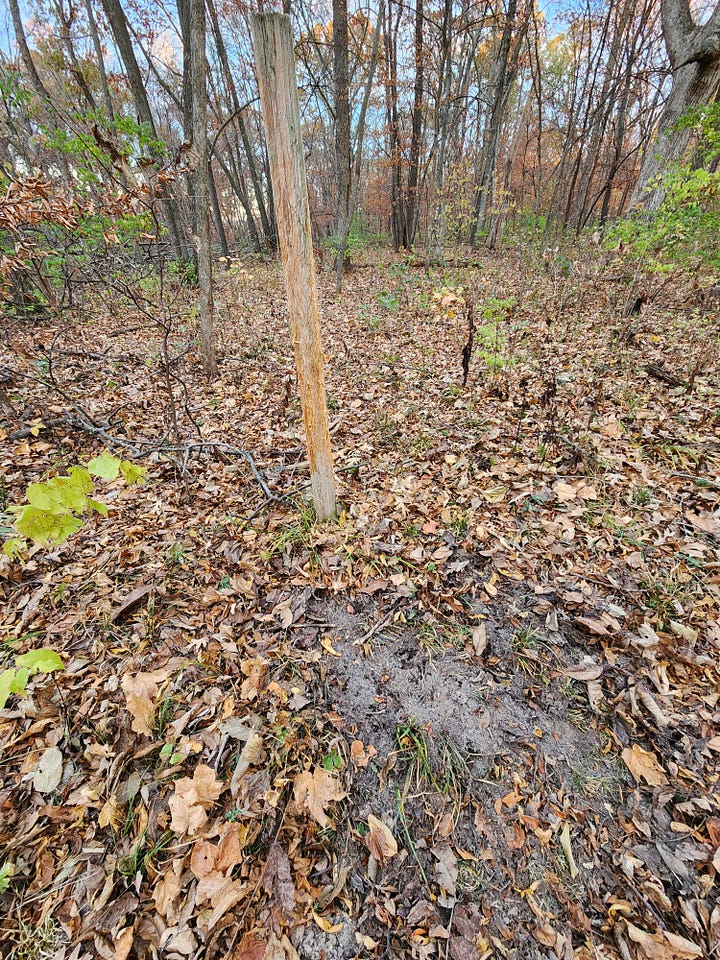
Here a buck was rubbing its antlers on this post. On the right you can see where it was pawing at the earth.
Bucks rub their antlers on trees for several reasons, including:
Marking territory: Bucks rub their antlers on trees to mark their territory.
Showing dominance: Bucks rub their antlers on trees to show their dominance and intimidate other bucks.
Removing velvet: Bucks rub their antlers on trees to remove an itchy, velvet coating that developed over the summer.
Advertising mate appeal: Bucks may rub to advertise their mate appeal to does.
Preparing for mating season: Bucks rub their antlers on trees before and during mating season, also called "rutting".
If you enjoy Cedar Creek Nature Notes, I encourage you to subscribe to my friend Larry Stone’s “Listening to the Land.” It’s fantastic. Larry has forgotten more than I will ever know about our outdoor world.
For another glimpse of the wonders of the Iowa outdoors, Diane Porter’s My Gaia is another Substack I enjoy. It’s full of observations on nature and is ripe with wisdom.
I’m a member of the Iowa Writers Collaborative. Please sample the talents of my fellow collaborative members. If you can afford to be a paid subscriber, that would be great. If not, the vast majority of content is free. And here is a link to the Iowa Podcasters’ Collaborative, should you be interested. Check out my Substack Deep Midwest: Politics and Culture if you aren’t already a subscriber. My Iowa Revolution podcast with award-winning broadcaster Spencer Dirks can be found here.

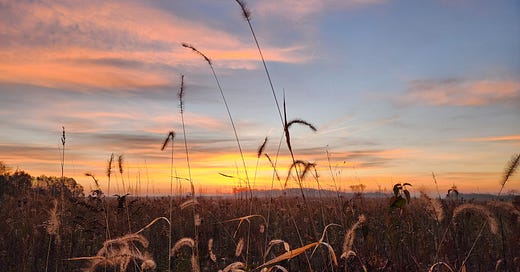




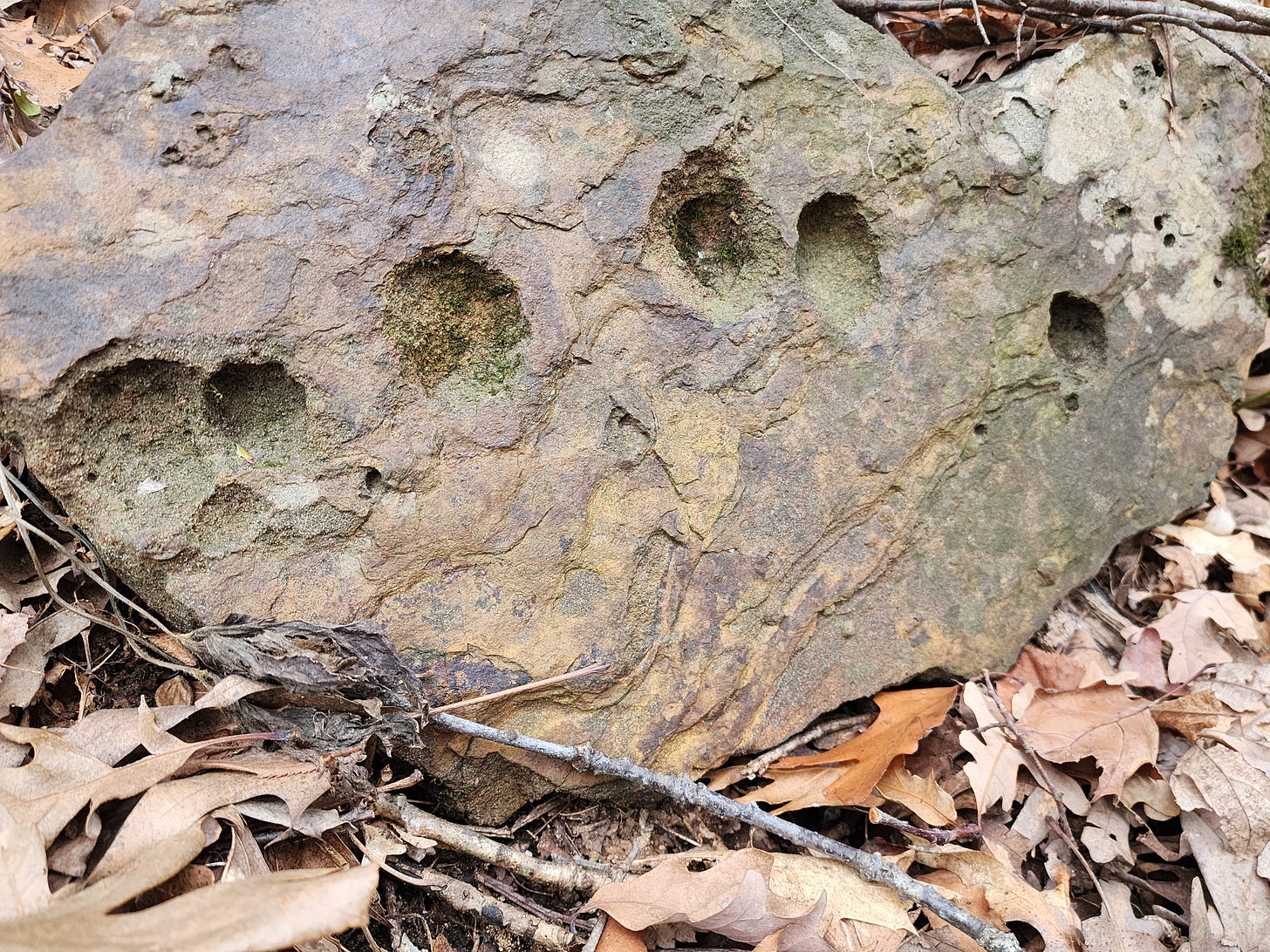
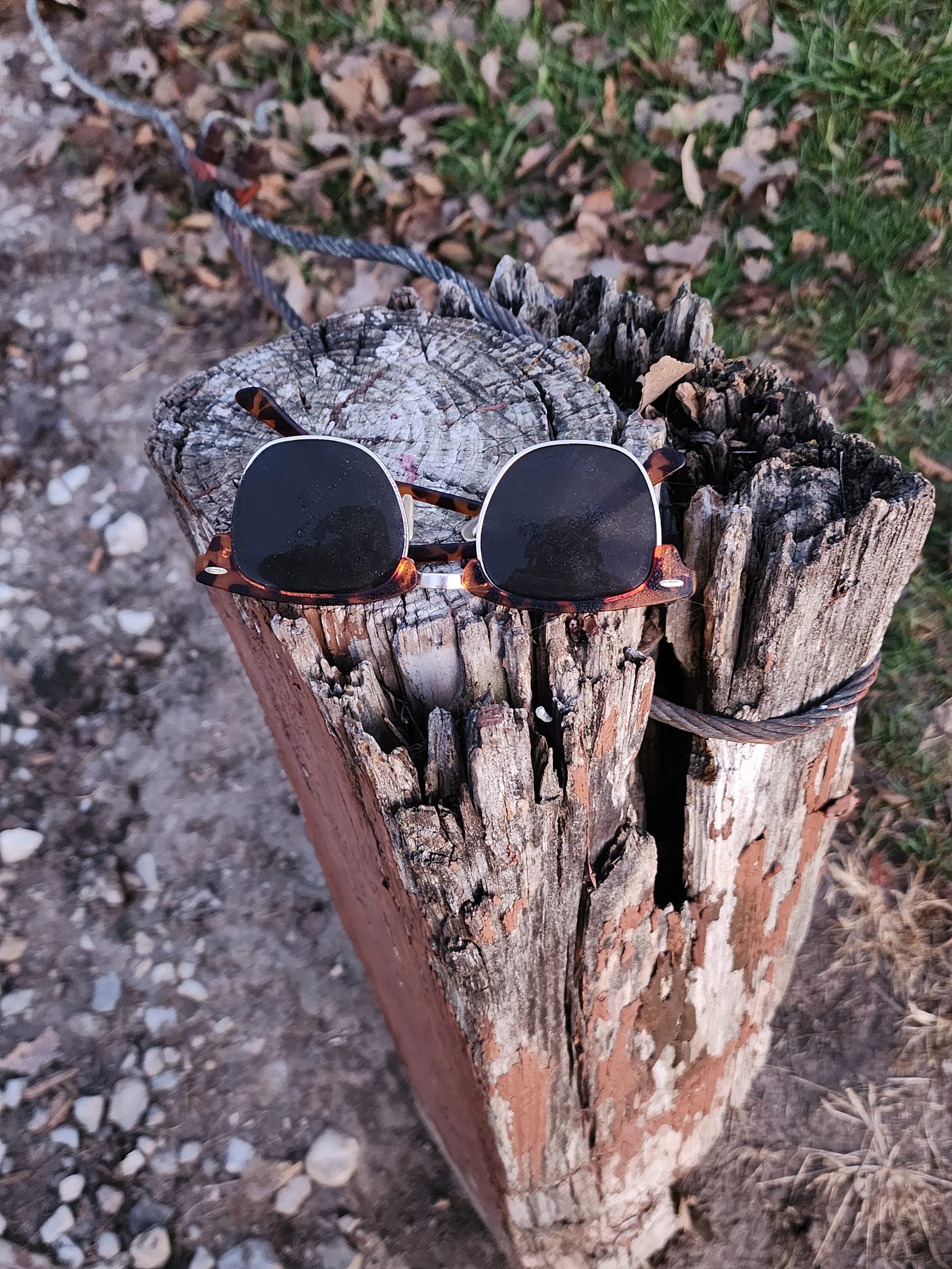
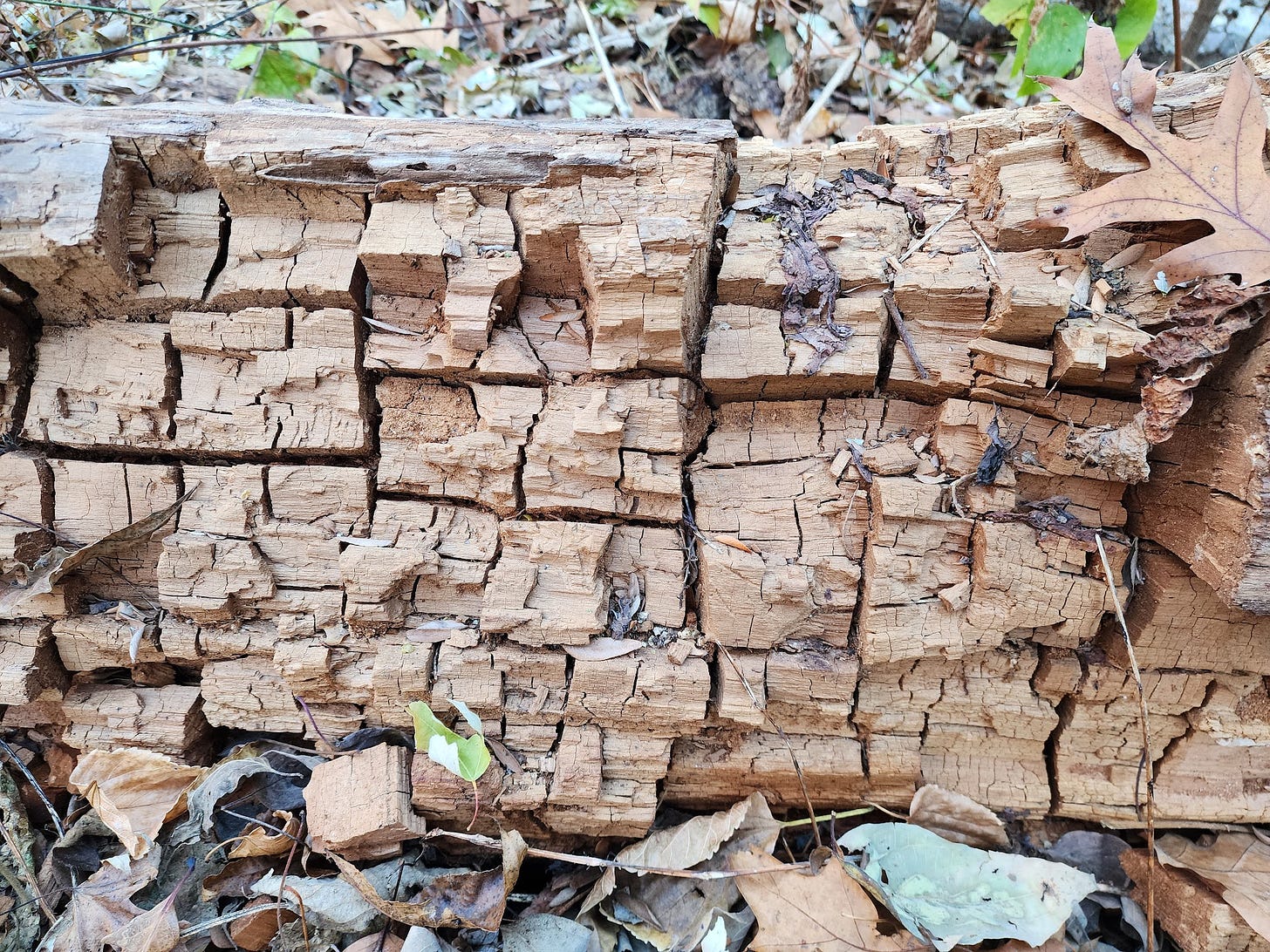
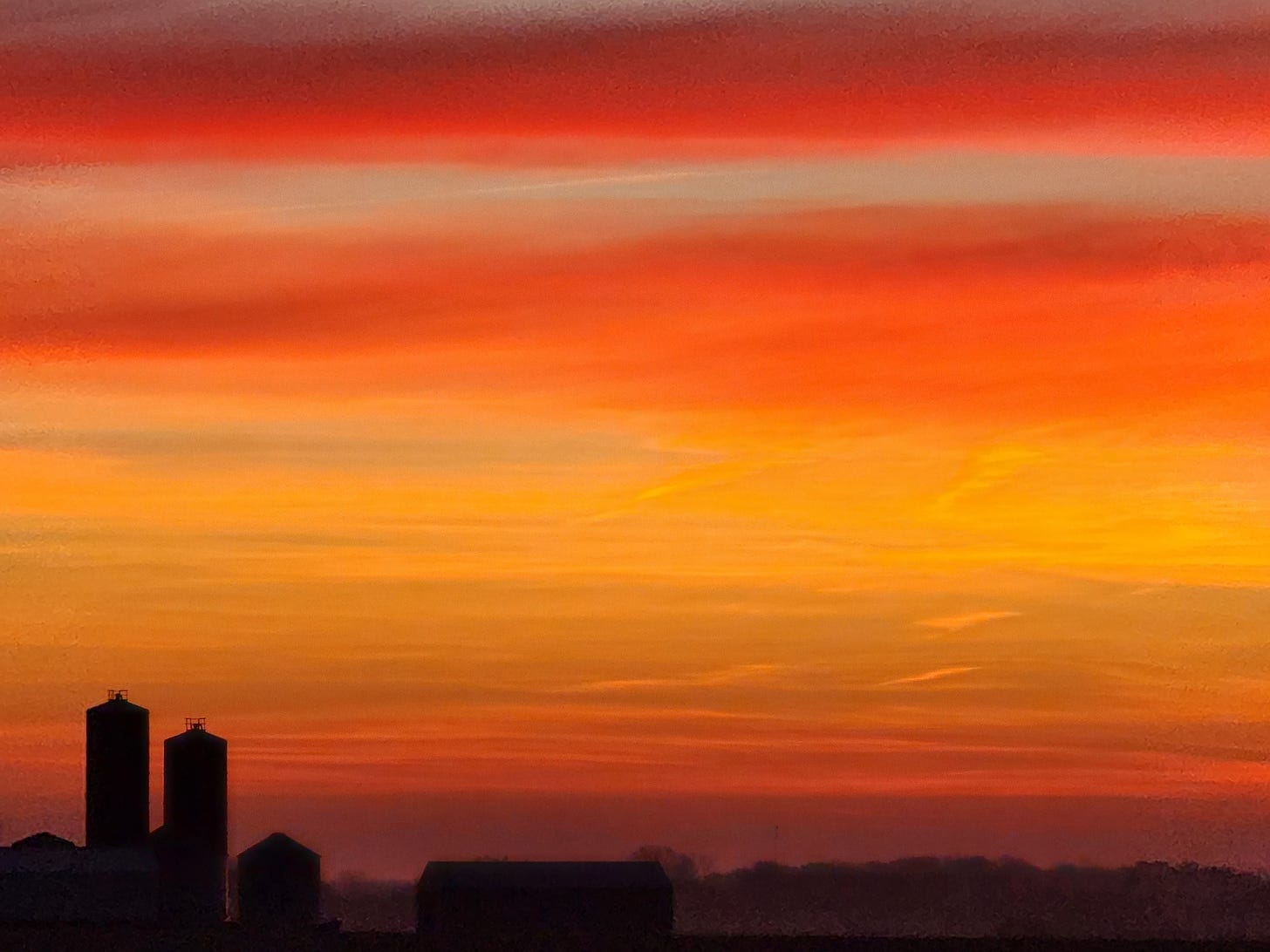
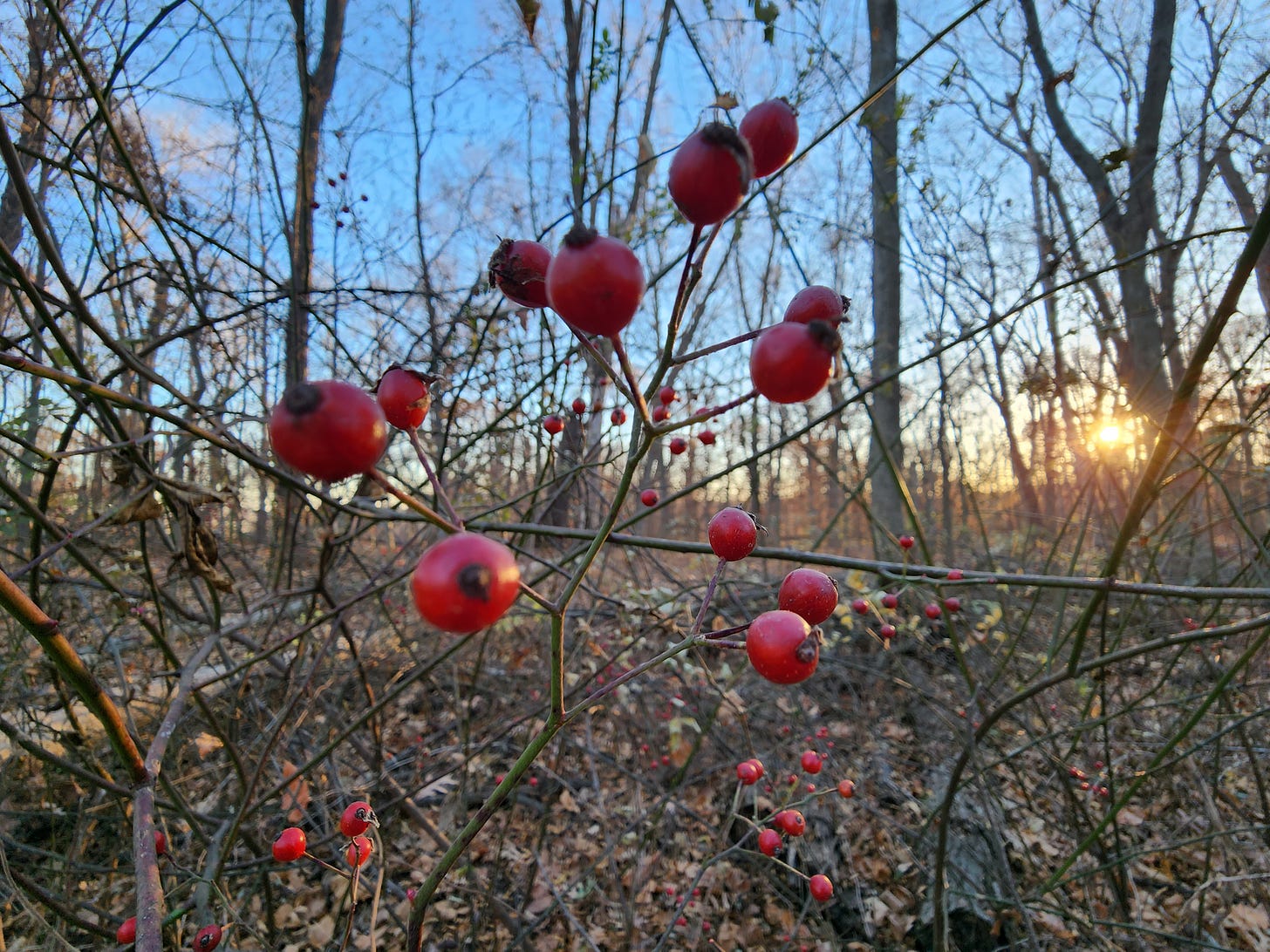
Delightful little birds, altho elusive. Haven't seen one in a while